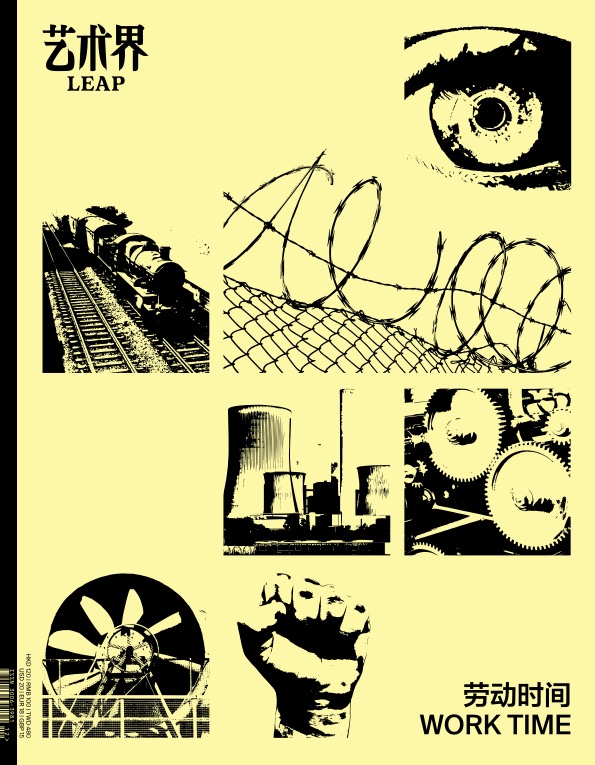The American poet Emily Elizabeth Dickinson once wrote: “To make a prairie, it takes a clover and one bee, / One clover, and a bee. / And revery.” For Spencer Finch, making a glacier takes a few candles to burn and then fade out (Shanghai Glacier). Finch regularly refers to the poems of Emily Dickinson,…
Read MoreFor his newest project, Hu Qingtai purchased and executed several plans for artworks. The result is an exhibition of eight works, each made according to the ideas of a different artist. The artists are Hu’s older brother Hu Qingyan, Li Gang, Li Liao, Jiang Bo, Yang Jian, Yang Xinguang, Zeng Hong, and Zhan Rui. By…
Read MoreWithin Chinese contemporary art discourse, there is often no distinction made between “female artist” and “feminist artist.” Thus, for Lin Tianmiao, escaping the mutual entanglement of these two concepts, both of which play a part in her practice, is simply impossible. The former generally places an essentialist emphasis on female identity, in her case focusing…
Read MoreThe Met, which has never before mounted a major exhibition of Chinese contemporary art, ambitiously frames this first attempt as an exploration of how contemporary works from a non-Western culture could be displayed in an encyclopedic art museum. Shown in the museum’s large galleries of Chinese art, “Ink Art” is the epitome of a missed…
Read MoreThe Shenzhen Ink Art Biennale may well have been the first biennial founded specifically to show a traditional art form. Thus, its influence has been limited to the fields of ink painting and traditio…
Read MoreThis year, red and black flags were raised outside the main site of the 4th Athens Biennale (AB4): the former Athens Stock Exchange building, which closed its doors in 2007. The colors invoked associa…
Read MoreAt its core, the exhibition “Animism” is a European export. Now, produced under circumstances of limited financial resources, it has been introduced into China and Asia for the first time. On the surface, German curator Anselm Franke works from aesthetic and anthropological perspectives to raise an anti-modernist proposal for the order of knowledge. From participating…
Read MoreCritics of Qiu Zhijie’s new solo exhibition have most frequently referred to it as “burdensome” and “cluttered.” How is it that an artist who has been practicing for over 20 years, so known for his cerebral approach, can fall victim to overindulgence? If we attempt to understand the subjective impressions that guide Qiu’s value judgements,…
Read MoreThe Hugo Boss Prize was founded in 1996. For its first two instances, in a move to better showcase the event, a group show of the nominees was organized at the Guggenheim; it wasn’t until the third that only the winning artist’s work was exhibited. The organizers of the Hugo Boss Asia Art award are…
Read MoreYan Xing’s new solo exhibition “Recent Works” is his most ambitious to date. It consists of four interrelated mixed-media projects: Dirty Art; Lenin in 1918; Two videos, three photographs, several related masterpieces, and American art; and The Collectress. Together these create a consistent atmosphere of quality, repeatedly reminding visitors of the artist’s exquisite control over…
Read MoreLu Yang’s “Uterusman,” a semi-open-source work featuring the eponymous genderless superhero warrior, takes the inspiration for its protagonist’s physique from the shape of a female uterus, itself rese…
Read MoreIs there such a thing as public space today? Given the decisive battles over public space that have taken place in the twenty-first century alone, this was a timely question posed by the heavily criti…
Read MoreA couple of things suggest that the 12th Biennale de Lyon is an attempt to sidestep the sober seriousness of many large-scale exhibitions. The first is the visual identity of the biennial, which is ba…
Read More“Roppongi Crossing 2013” is the fourth triennial survey of trends in contemporary Japanese art at the Mori Art Museum. The curatorial team of Mami Kataoka, Reuben Keehan, and Gabriel Ritter have maint…
Read MoreAs the financial hub of Southeast Asia, Singapore has clear cultural ambitions within the region. With the fourth Singapore Biennale, the primary aim is the study and display of Southeast Asian curato…
Read MoreOn first encountering the works of Taiwanese artist Liu Han-Chih, few people fail to be amused by the sense of black humor around them. One, titled Collar Seizing Device, is a mechanical installation which sports a handle that connects directly to the viewer’s collar. When the handle is turned, the viewer is dragged upwards by…
Read MoreThe title of Wang Chung-kun’s “Series of Another Soundscape” seems to misadvertise the show as a sonic exploration of sound as environment. The exhibition, hosted by Nou Gallery, Taipei, features five kinetic sculptures that notate music: a lottery machine that decodes the winning number on digital screen; a fax machine that prints a continuous sheet…
Read MoreAuthorship is a subject matter that has returned repeatedly throughout the history of avant-garde art practices in the twenty-first century. Ever since Marcel Duchamp mocked the artistic genius behind…
Read MoreThe oppressive heat of this Tokyo summer is a fitting setting for the second half of a two-part solo exhibition from Francis Alÿs at MOT in Tokyo, based on his recent work Don’t Cross the Bridge Before You Get to the River. In the main exhibition hall a two-sided screen plays a video loop of…
Read MoreMy curiosity in Liao Guohe started from his CV. He was born in Calcutta in 1977, studied mechanical drawing in the United States, and now lives in Hunan. Before World War II, about 20,000 Chinese fled to Calcutta; by the end of the Sino-Indian War in 1962 this population was down to a cool 7,000…
Read More




